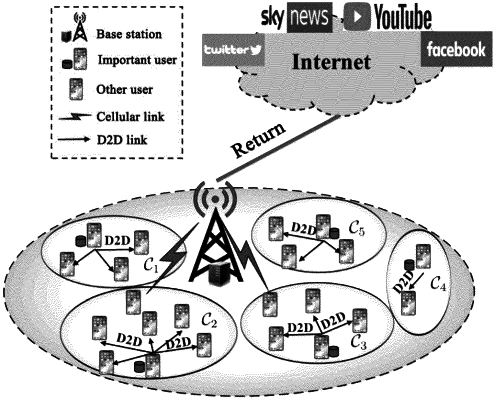| CPC H04L 41/12 (2013.01) [H04L 41/16 (2013.01); H04W 76/14 (2018.02)] | 9 Claims |

|
1. An active edge caching method based on community discovery and weighted federated learning, comprising:
aggregating users into different user groups in a service scope of a base station by using a community discovery algorithm;
selecting a most important user from each user group as a caching node to provide content distribution services; and
training a DL model with a content popularity prediction framework based on attention weighted federated learning, and then predicting user's content preferences at the next moment by using the trained DL model to cache hot content on a selected user;
wherein the aggregating users into different user groups in a service scope of a base station by using a community discovery algorithm comprises:
(i) obtaining physical distances and social relationships between different users; constructing a device-to-device (D2D) content sharing graph g={u, ε} according to the physical distances and social relationships between different users, wherein u is a user node, ε represents whether a D2D communication link has been established between users for content transmission, and ε=1 represents that a D2D communication link has been established; that is, when the physical distance between user u and user v in the base station is less than a communication distance threshold and the two users have a social relationship, a D2D communication link has been established between user u and user v for content transmission, and εu,v=1; otherwise, εu,v=0; and
(ii) dividing the users into different user groups C={C1, C2, . . . , Ci, . . . , Cj} based on the constructed D2D content sharing graph g={u, ε}.
|